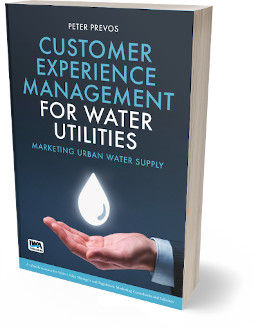
Bottled Water Marketing: The Importance of the Place of Origin

Peter Prevos |
758 words | 4 minutes
Share this content
Water is like air—a naturally occurring substance without which life is not possible. But unlike air, tap water is a commercial commodity that is only available at a price from water utilities. Bottled water marketing is one of the greatest commercial successes of the last century. Water utilities in many countries sell water that is perfectly drinkable, however, bottled water companies convinced the public that their value proposition is better than tap water.
In an early episode of the Australian comedy show Gruen Transfer, panellists discussed why people are willing to pay so much more for bottled water than for tap water. Even though tap water provides the same benefits as bottled water, the price difference is gigantic. Marketing executive Russel Howcroft argued that this difference in price exists because water utilities are "lazy marketers".
Water Utilities generally have a weak brand and judging by the opinions published on Twitter, people hold a negative sentiment towards tap water. This article discusses a core ingredient of bottled water marketing to explain the high willingness to pay.
Origin as Bottled Water Marketing Strategy
One of the strategies often used in bottled water marketing is by emphasising the natural origins of their product. While bottled water advertising often shows beautiful mountains and pristine springs, water utilities prefer to advertise the technology they use to treat water. Whether these origin stories are true is doubtful. A Chicago business has sued Nestle for falsely promoting the origin of bottled water. Researchers have repeatedly published findings that tap water is inherently safer than bottled water. But yet, the sales of bottled water keep increasing.

Nestlé is in trouble because its “spring water” source is municipal tap water. Nestlé's advertising campaign claims that Ice Mountain is spring water, while it is distinctly referred to as “drinking water”, which is defined as “municipal water and well water…” in their documents. Nestle simply processes the tap water and branded with images of pristine glacial lakes and mountains.
This strategy is standard for bottled water companies. Bottled water is identical to tap water, but at one thousand times the price. Bottled water companies increase the value proposition of their offering by emphasising how their product is different to tap water. A common strategy used by bottled water companies is to highlight the origin of the water and link it to increased benefits, such as health. Just look at Fiji Water, Evian and any other bottled water brand to see how they connect their water to a pristine natural environment.

Creating emotional connections
This strategy is very similar to the way toilet paper is sold. Advertising for toilet paper creates an emotional connection with the product by emphasising a perfect lifestyle. Bottled water establishes this emotional connection by highlighting the health benefits of water through a connection with pristine natural surroundings.
Water Utility Marketing
In developed countries, tap water is provided through reticulated systems. Pipes in your street deliver water directly to your house, and you pay the price, depending on the amount of water used. Even though tap water pricing is a controversial topic, it is very cheap. With prices of less than one cent per litre, filling a bottle of water costs practically nothing. But, not all water is the same. Purveyors of bottled water charge hundreds of times the price people pay for tap water, even though the core product is the same.
Many water utilities don't implement origin strategies very well. Municipal water utilities are often focusing on treatment processes instead of the natural origin of their tap water. Utility engineers are proud of their achievement and love to tell their community about the technology needed to deliver drinkable water to each house.
This strategy is set for failure because it emphasises the production process without any emotional attachment. Problems with the acceptance of recycled sewage as drinking water forcefully illustrate this point.
Water utilities could become less lazy by showing customers the natural origins of their water. In the end, all water comes from nature and tap water is as good, if not better, than bottled water.
If you like to learn more about water utility marketing, then please consider reading Customer Experience Management for Water Utilities by Peter Prevos.

Customer Experience Management for Water Utilities: Marketing Urban Water Supply
Practical framework for water utilities to become more focused on their customers following Service-Dominant Logic.
Share this content


